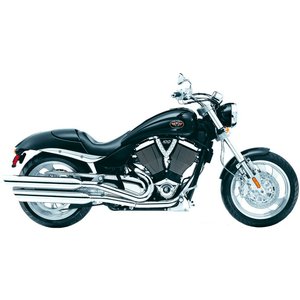Victory Hammer [2009-2017]: A Muscle Cruiser That Defies Convention 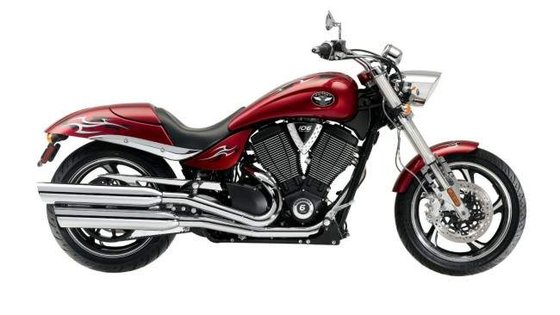
When Victory Motorcycles introduced the Hammer in 2005, they weren’t just building another cruiser—they were creating a manifesto for American muscle on two wheels. The Hammer generation spanning 2009–2017 refined this vision with audacious styling, relentless power, and engineering that dared to stand apart from the Harley-Davidson-dominated crowd. After spending time with this modern classic, it’s clear why the Hammer remains a cult favorite among riders who crave raw performance wrapped in head-turning aesthetics.
Design & Presence: Unapologetic Muscle, Timeless Swagger 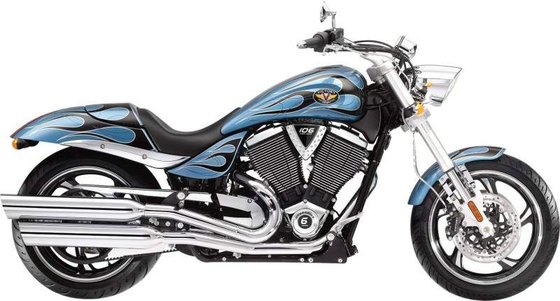
The Victory Hammer doesn’t whisper—it roars visually before you even thumb the starter. Its design language borrows from hot rods and drag bikes, with a 250mm rear tire (9.84 inches) that dominates the silhouette, paired with an 18-inch front wheel for a bulldog stance. The staggered slash-cut exhaust, blacked-out components (on 8-Ball models), and chopped rear fender amplify its "factory custom" attitude.
Color schemes evolved yearly, from the 2009 Hammer S’s bold Boardwalk Blue/White Racing Stripes to the 2017 model’s Gloss Black/White accents. The Hammer S variants leaned into muscle-car nostalgia with Suede Black/Red combos and racing stripes, while 8-Ball editions doubled down on stealth with murdered-out finishes. The inverted 43mm forks and oversized brake rotors added a sportbike edge, making it clear this wasn’t a bike built solely for straight-line cruising.
The seat height—26.5 inches (673mm)—keeps the rider low and planted, but the forward foot controls (repositioned 2.25 inches rearward on later models) strike a balance between aggressive posture and all-day comfort. Every detail, from the LED taillight to the removable passenger cowl, screams intentionality. This is a bike that looks fast standing still.
Engine & Performance: The Heart of a Dragster 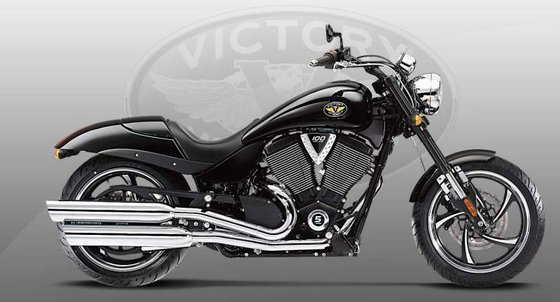
At the core of the Hammer lies the Freedom 106/6 V-Twin, a 1731cc (106 cubic-inch) beast that evolved from the earlier 1634cc (100ci) unit. With 97 HP at 5,000 RPM and a crushing 113 lb-ft of torque (153 Nm) peaking at just 3,000 RPM, this engine isn’t subtle. The air/oil-cooled powerplant features a 101mm bore, hydraulic lifters, and self-adjusting cam chains, ensuring reliability despite its brutish output.
Twist the throttle, and the Hammer lunges forward with the urgency of a sportbike, yet the torque curve feels broad and accessible. The 6-speed transmission (upgraded from 5-speed in 2011) includes an overdrive gear, dropping RPMs by 20% at highway speeds. Shifts are crisp, thanks to helical-cut gears and Victory’s 2011 transmission overhaul that reduced driveline lash by 66%. Neutral Assist made stoplight transitions smoother, while the carbon-reinforced belt drive stayed clean and maintenance-light.
Riding the Hammer is an exercise in controlled aggression. The engine’s growl deepens through the crossover exhaust, but it’s the midrange punch that steals the show. Roll-ons from 60 mph (97 km/h) in sixth gear still deliver passing power without downshifting—a rarity in cruisers.
Handling & Braking: Defying Physics (and Expectations) 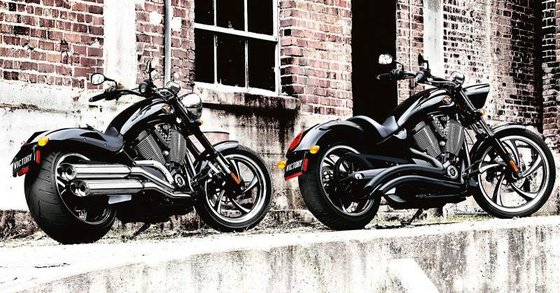
A 672 lb (305 kg) cruiser with a 65.7-inch wheelbase (1,669mm) shouldn’t handle this well. Yet the Hammer’s 32.7-degree rake and 5.5-inch trail (140mm) lend surprising agility. The Dunlop Elite 3 tires—130/70-R18 front, 250/40-R18 rear—provide a sticky, confidence-inspiring contact patch.
The inverted front fork soaks up bumps with 5.1 inches (130mm) of travel, while the rear mono-tube shock (3.9 inches/100mm travel) balances compliance and stability. Push it into a corner, and the chassis remains composed, though the wide rear tire demands deliberate lean-in.
Stopping power comes from dual 300mm front rotors gripped by 4-piston calipers, offering bite that rivals liter-class sportbikes. The rear single-disc setup is adequate but plays second fiddle—a reminder to lean on the front anchors during spirited riding.
Comfort & Practicality: The Daily Bruiser 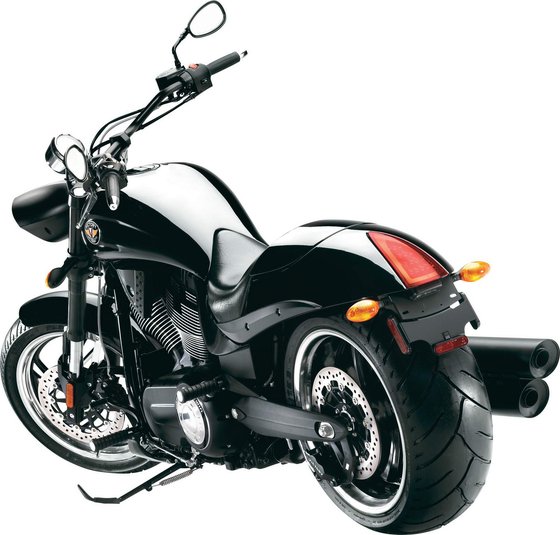
The Hammer’s riding position splits the difference between cruiser relaxed and sportbike engaged. The pullback bars and mid-mounted pegs (later models) reduce wrist strain, while the sculpted seat supports longer rides—though the 26-inch height might challenge shorter riders.
At 17 liters (4.5 gallons), the fuel tank limits range to ~150 miles (241 km) between fill-ups, given the engine’s thirst under hard acceleration. Vibrations are minimal thanks to a counterbalanced crankshaft, making 80 mph (129 km/h) cruising surprisingly serene.
Storage? Forget it. This is a minimalist machine—perfect for riders who prioritize style over utility. Add a swingarm bag or sissy bar from MOTOPARTS.store for weekend trips.
Competition: How the Hammer Stacks Up 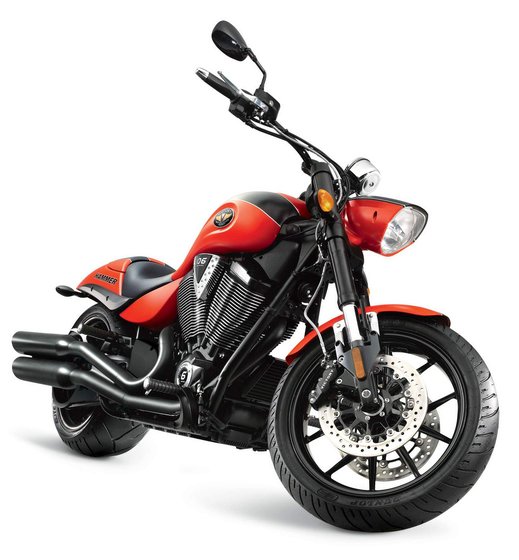
The Hammer’s closest rivals were the Harley-Davidson Fat Boy and Indian Chief Classic, but it carved a niche with its sportier DNA:
-
Harley-Davidson Fat Boy (103ci/1690cc): The Fat Boy’s 68 HP and 96 lb-ft torque paled next to the Hammer’s 97 HP/113 lb-ft. While the Harley’s chassis felt more planted at low speeds, the Hammer dominated in acceleration and cornering flair. The Fat Boy’s iconic styling, though, retained broader resale appeal.
-
Indian Chief Classic (Thunder Stroke 111): Indian’s 111ci (1,811cc) engine delivered 119 lb-ft torque but weighed 727 lbs (330 kg). The Chief prioritized touring comfort, while the Hammer leaned into dragstrip bravado. The Chief’s $18k+ price tag also undercut the Hammer’s value proposition.
-
Yamaha VMAX 1700: The 197 HP VMAX outgunned the Hammer in sheer speed but lacked its everyday rideability. At 683 lbs (310 kg), the Yamaha felt top-heavy compared to the Victory’s balanced heft.
The Hammer’s trump card? Exclusivity. With Victory’s 2017 discontinuation, well-maintained Hammers are now collector items—a rarity on the road compared to ubiquitous Harleys.
Maintenance: Keeping the Legend Alive
The Hammer’s drivetrain is robust, but smart upkeep ensures longevity:
-
Oil Changes: Victory recommended synthetic 20W-40 every 5,000 miles (8,000 km). The 4.7-liter sump (4.97 quarts) requires a filter swap—a 15-minute job with MOTOPARTS.store’s oil change kits.
-
Belt Drive: Inspect the carbon-reinforced belt every 10k miles for cracks or misalignment. Clean with a soft brush—no lubing needed.
-
Brakes: Replace sintered pads every 15k miles. Upgrade to wave rotors or braided lines for sharper feedback.
-
Suspension: The preload-adjustable rear shock benefits from annual fluid swaps. Consider progressive springs for heavier riders.
-
Electrical: The 18Ah battery lasts 3–5 years. Keep terminals clean and trickle-charge during storage.
Common upgrades include aftermarket exhausts (Tri-Pro or X-Bow slip-ons), air intakes, and ECU tuners to unlock hidden torque. The inverted forks accept cartridge emulators for track-day precision.
Conclusion: The Hammer’s Lasting Legacy
The Victory Hammer wasn’t just a motorcycle—it was a rebellion against cruiser conformity. It proved that muscle could coexist with handling, that innovation wasn’t antithetical to tradition. While Victory’s demise left a void, the Hammer endures as a testament to what happens when engineers prioritize passion over playbooks.
For owners, MOTOPARTS.store offers the keys to preserving—or modernizing—this icon. Whether it’s a performance cam, a custom seat, or that elusive OEM trim piece, every upgrade writes a new chapter in the Hammer’s unfinished story. Ride it hard, maintain it wisely, and this American underdog will keep turning heads long after its thunderous exhaust note fades into the horizon.
Specifications sheet
| Notes | |
|---|---|
| Weight note: | Wet weight ≈ 330kg (727 lbs) including fluids |
| ABS availability: | Optional on select models/years |
| Model variations: | Earlier models (2009-2010) featured 1634cc engine with 8.7:1 compression ratio. 8-Ball editions used 5-speed transmission pre-2011. |
| Engine | |
|---|---|
| Stroke: | Four-stroke |
| Max power: | 71 kW | 95.0 hp |
| Max torque: | 153 Nm |
| Fuel system: | Electronic Fuel Injection with dual 45mm throttle bodies |
| Max power @: | 5000 rpm |
| Spark plugs: | NGK DCPR6E |
| Displacement: | 1731 ccm |
| Max torque @: | 3000 rpm |
| Configuration: | V |
| Cooling system: | Oil & air |
| Spark plug gap: | 0.8 |
| Compression ratio: | 9.4:1 |
| Number of cylinders: | 2 |
| Valves per cylinder: | 4 |
| Dimensions | |
|---|---|
| Wheelbase: | 1669mm (65.7 in) |
| Dry weight: | 305 |
| Seat height: | 660mm (26.0 in) |
| Overall length: | 2382mm (93.8 in) |
| Ground clearance: | 148mm (5.8 in) |
| Fuel tank capacity: | 17.0L (4.5 US gal) |
| Drivetrain | |
|---|---|
| Final drive: | belt |
| Transmission: | 6-speed, wet multi-plate clutch |
| Primary drive: | Gear drive with torque compensator |
| Maintainance | |
|---|---|
| Rear tire: | 250/40-18 |
| Engine oil: | 20W40 |
| Front tire: | 130/70-18 |
| Brake fluid: | DOT 4 |
| Engine oil capacity: | 4.75 |
| Engine oil change interval: | Every 8000km or 2 years |
| Valve clearance check interval: | Self-adjusting hydraulic lifters (no manual adjustment required) |
| Recommended tire pressure (rear): | 2.5 bar (36 psi) solo / 2.8 bar (41 psi) with passenger |
| Recommended tire pressure (front): | 2.25 bar (33 psi) |
| Chassis and Suspension | |
|---|---|
| Frame: | Aluminum twin-spar |
| Trail: | 140mm (5.5 in) |
| Rear brakes: | Single 300mm floating disc, 2-piston caliper (ABS on some models) |
| Front brakes: | Dual 300mm floating discs, 4-piston calipers (ABS on some models) |
| Rear suspension: | Single mono-tube gas shock with rising rate linkage, 76mm (3.0 in) travel, preload adjustable |
| Front suspension: | Inverted cartridge telescopic fork, 43mm diameter, 130mm (5.1 in) travel |
| Rake (fork angle): | 32.7° |



